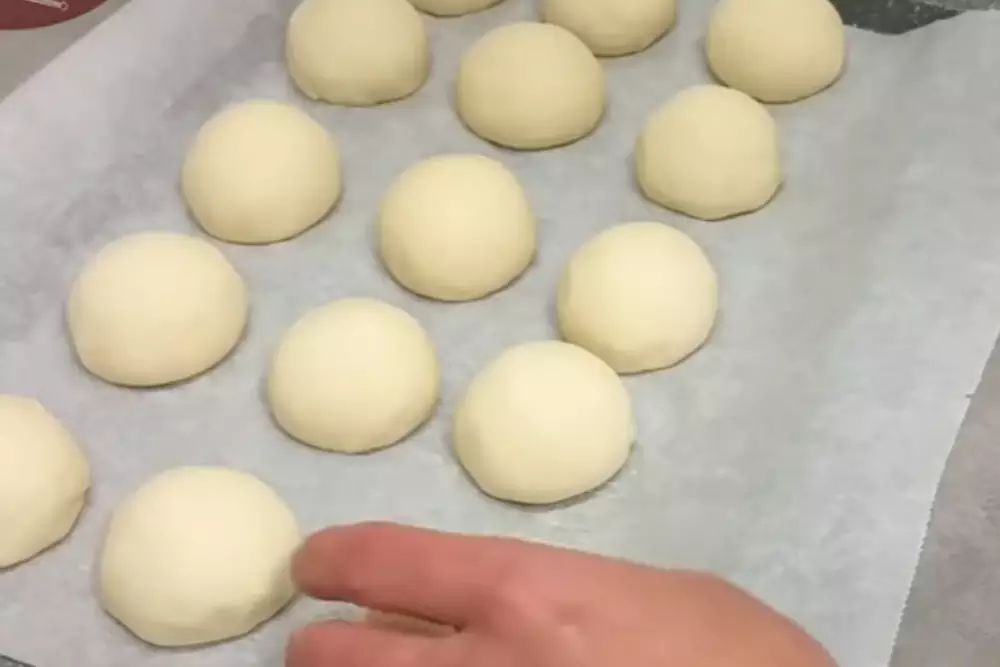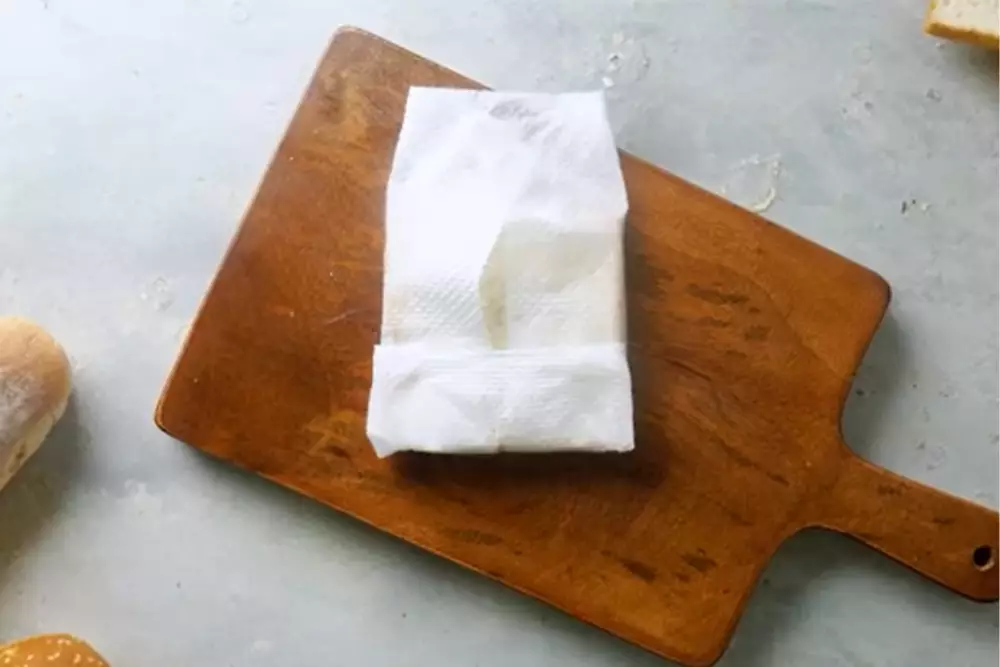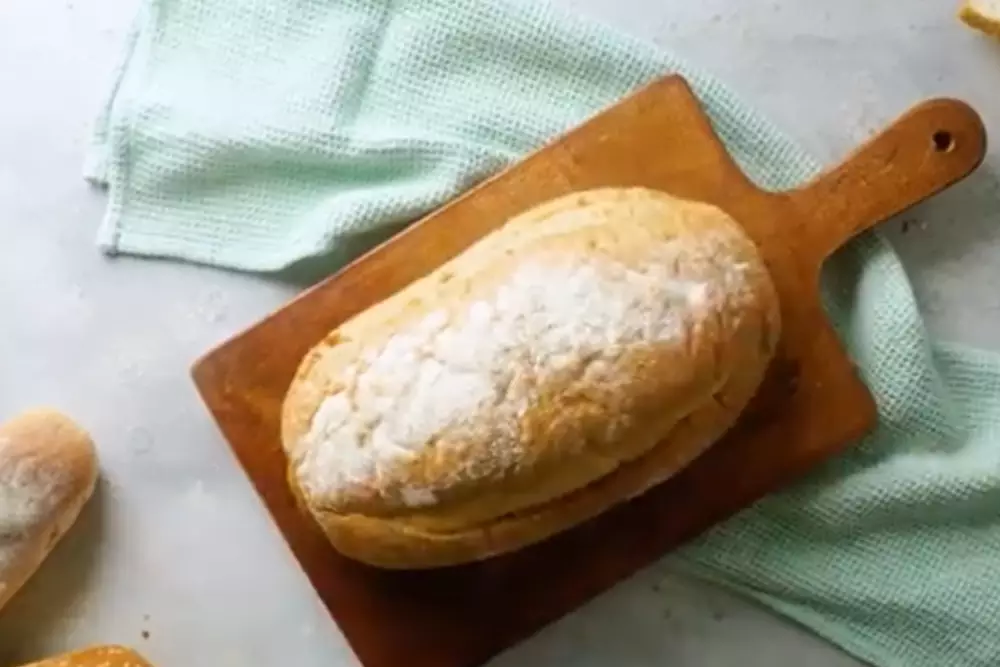Once upon a time, in kitchens across the land, the delightful aroma of freshly baked bread was cherished by all. But not everyone had the time or patience to start from scratch. For those home bakers seeking a shortcut to that just-baked goodness, frozen bread dough became their secret weapon.
Yet, there was a challenge to overcome – the thawing of frozen bread dough. This, they discovered, was the key to unlocking the perfect, oven-fresh result. And so, in this guide, we invite you on a journey to uncover the best ways to thaw frozen bread dough. It’s the secret to enjoying homemade bread, rolls, and more, with ease.
So let’s use our professional tutorial to learn how to flawlessly thaw frozen bread dough. How To Thaw Frozen Bread Dough. You can easily make wonderful homemade bread by baking!
Why Freeze Bread Dough?
Before we delve into the intricacies of thawing frozen bread dough, let’s address a fundamental question: why should you freeze bread dough in the first place? This is a query that even seasoned bakers might ponder.
After all, isn’t baking bread all about that warm, freshly kneaded, and right-out-of-the-oven experience? Well, yes, but freezing bread dough opens up a world of convenience, creativity, and, surprisingly, even better bread. Here are some compelling reasons why freezing bread dough is a game-changer in the world of baking:
- Convenience at Your Fingertips: Life can be busy, and not everyone has the luxury of spending hours in the kitchen. Freezing bread dough allows you to have homemade, freshly baked bread whenever you desire without the need for extensive prep work. It’s like having a baker on call in your freezer.
- Portion Control: Ever baked a massive loaf only to find that it’s too much for your needs, leading to leftover slices going stale? Freezing bread dough in individual portions lets you bake only what you need, reducing waste and ensuring that every slice is as fresh as the first.
- Freshness on Demand: Imagine having the delightful aroma of freshly baked bread greeting you at breakfast, lunch, or dinner – even on the busiest of days. Freezing dough lets you enjoy the taste and smell of just-baked bread at any time, as if you had your own personal bakery.
- Endless Variety: Frozen bread dough is your canvas for culinary creativity. With a single batch of dough, you can craft an array of bread creations, from classic loaves and rustic rolls to sweet cinnamon swirls and savory stuffed breads. It’s a versatile starting point for culinary experimentation.
- Time Saver: Kneading, proofing, and waiting for dough to rise can be time-consuming. When you freeze bread dough, you skip these steps, significantly cutting down the time it takes to get fresh bread on the table.

Different Types of Frozen Bread Dough
Baking with frozen bread dough is a convenient way to enjoy fresh, homemade bread without the extensive prep work. However, not all frozen bread dough is created equal. To become a master at crafting delicious baked goods, it’s essential to understand the different types of frozen bread dough available and their unique characteristics.
1. Basic White Bread Dough:
- Versatile and widely available.
- Ideal for traditional bread loaves and rolls.
- Mild flavor that complements both sweet and savory recipes.
2. Whole Wheat Bread Dough:
- Healthier choice with added nutrients and fiber.
- Hearty flavor and denser texture.
- Complements recipes featuring nuts, seeds, and dried fruits.
3. Sweet Dough:
- Higher sugar content for a sweeter flavor.
- Rich and tender texture.
- Perfect for creating sweet treats like cinnamon rolls and sticky buns.
4. Pizza Dough:
- Elastic and easy to work with.
- Typically thinner and crispier when baked.
- Perfect for both classic and creative pizza recipes.
5. Herb and Garlic Dough:
- Infused with herbs and garlic for added flavor.
- Versatile for savory recipes.
- Ideal for making herb and garlic breadsticks, focaccia, and stuffed savory breads.
6. Dinner Roll Dough:
- Pre-portioned into small rolls.
- Soft and tender texture.
- Ideal for easy side dishes, appetizers, and mini sandwiches.
7. Gluten-Free Dough:
- Suitable for those with gluten sensitivities.
- May have a slightly different texture and taste.
- Available in various styles, including white and whole grain.
8. Artisan-Style Dough:
- Typically contains extra ingredients like olive oil, herbs, or seeds.
- Offers a more rustic, crusty texture.
- Provides a shortcut to bakery-quality artisan bread like baguettes, ciabatta, and boules.
How to Thaw Frozen Bread Dough?
Thawing frozen bread dough doesn’t have to be a lengthy process. With the right tips and tricks, you can expedite the thawing stage without compromising the quality of your baked goods.Whether you’re in a hurry or simply looking to save time, these techniques will help you thaw your dough quickly and efficiently:
- Microwave Method (Caution Required): While not the recommended method, you can use your microwave to thaw frozen bread dough in a pinch. Place the dough on a microwave-safe plate and use the defrost setting in short bursts, turning the dough frequently to ensure even thawing. Be cautious not to overheat the dough, as it can start to cook on the edges. This method is best for small portions and requires close attention.
- Steamy Kitchen Trick: Create a steamy environment to speed up the thawing process. Boil water and pour it into a shallow pan or bowl. Place the bowl with the frozen dough on the oven rack above the steam. Close the oven door and let the dough thaw in the moist, warm environment. Ensure the oven is turned off during this process.
- Use a Dough Proofer: If you frequently work with frozen bread dough, investing in a dough proofer can be a game-changer. These devices provide a controlled, warm environment that helps dough thaw and rise quickly. Follow the manufacturer’s instructions for the best results.
- Cold Water Bath: For a faster thaw than the refrigerator method, submerge the sealed bag or container of frozen dough in cold water. Change the water every 30 minutes to maintain a consistent temperature. This method typically takes 1-2 hours, depending on the dough’s size.
- Plan Ahead with Portioned Dough: Portion your dough before freezing it. Smaller portions thaw faster than a large lump. Plus, it allows you to bake only what you need, reducing waste and saving time.
- Thaw in a Warm Room: If you have a warm room in your home, like near a sunny window, use it to your advantage. Place the dough in a covered container in this room to harness the gentle warmth for thawing.
- Cover and Wait: Sometimes, the most effective way to thaw frozen bread dough quickly is to be patient. Place the dough in a covered container at room temperature and wait for it to thaw naturally. It might take a couple of hours, but this method often results in better-textured bread.
- Adjust Your Recipe: Some recipes are forgiving and can accommodate partially thawed dough. If you’re running short on time, consider modifying your recipe to work with dough that hasn’t been completely thawed yet.

Preparing and Baking Thawed Bread Dough
You’ve successfully thawed your frozen bread dough, and now it’s time to transform it into a mouthwatering, freshly baked masterpiece. To ensure your bread turns out perfectly, follow these tips and techniques:
1. Shape with Care:
- After the dough has thawed and risen, handle it gently. Punch it down to release excess air and shape it into the desired form – whether it’s a loaf, rolls, or a creative shape. For a rustic look, you can even stretch and fold the dough.
2. Proper Proofing:
- Allow the shaped dough to proof (rise) again before baking. This step is essential for achieving the right texture and flavor. Cover the dough and let it rest until it has doubled in size. Be patient; this can take anywhere from 30 minutes to 2 hours, depending on the recipe and room temperature.
3. Preheat Your Oven:
- Preheating is crucial for even baking. Make sure your oven reaches the specified temperature in your recipe before you put the dough inside. This ensures that your bread will rise properly and develop a beautiful crust.
4. Create Steam:
- For that classic artisan bread crust, create a steamy environment in your oven. You can achieve this by placing a pan of boiling water on the bottom rack of the oven while your bread bakes. The steam helps the bread develop a crispy, golden crust.
5. Slash the Dough:
- Just before placing the bread in the oven, make shallow slashes or cuts on the surface. This helps control how the bread expands during baking, prevents it from tearing unpredictably, and adds an attractive visual element.
6. Monitor the Temperature:
- Invest in an instant-read thermometer to check the internal temperature of your bread. For most bread, aim for an internal temperature of around 190-210°F (88-99°C). This ensures that the bread is thoroughly baked and not doughy in the center.
7. Rotate and Check:
- About halfway through the baking time, rotate the bread to ensure even cooking. Keep an eye on the color of the crust; it should be a rich golden brown. If it’s browning too quickly, you can tent the bread with aluminum foil to prevent over-browning while it continues to bake.
8. Cool Properly:
- Once your bread is out of the oven, resist the temptation to slice into it immediately. Allow it to cool on a wire rack for at least 30 minutes. This cooling period lets the moisture redistribute inside the bread, resulting in a better texture.

Common Thawing Errors: What to Do and What to Avoid
Thawing frozen bread dough is a straightforward process, but some common mistakes can lead to less-than-ideal results. Here’s a quick guide on what to do and what to avoid:
Do:
- Plan Ahead: Thaw dough in the refrigerator for the best texture and flavor.
- Cover Properly: Use plastic wrap or a towel to cover the dough during thawing to prevent it from drying out.
- Patience is Key: Allow the dough to rise adequately before baking, even if it takes a bit longer than expected.
Avoid:
- Microwave Overuse: Avoid using the microwave excessively, as it can start cooking the dough instead of thawing it.
- Room Temperature Rush: Don’t rush thawing at room temperature; it may result in uneven rising and texture.
- Overproofing: Watch the dough carefully during proofing to prevent overproofing, which can lead to a collapsed loaf.
Conclusion
Learning how to successfully thaw frozen bread dough is a key culinary skill that will make your kitchen smell deliciously like freshly made bread. You can easily turn frozen dough into warm, delicious loaves by following a few easy steps and avoiding common mistakes.
This strategy opens up a world of ease, creativity, and gastronomic delight for bakers of all skill levels. So enjoy the process, play around with flavors, and enjoy the satisfaction of freshly baked homemade bread.